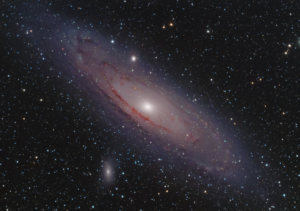Ads
A recent study conducted by astronomers from the University of Southampton has revealed shocking findings that challenge what was previously believed about supermassive black holes in the universe. These cosmic giants, some billions of times heavier than the sun, were previously only speculated to exist. However, this new research suggests that there may be a significantly larger number of supermassive black holes in the cosmos than previously estimated.
It is important to note that these supermassive black holes are not easily detectable by standard telescopes due to the dense clouds of gas and dust that surround them. This makes it difficult to observe them directly, leading to their hidden nature. The recent study utilized data from NASA’s InfraRed Astronomy Satellite and the X-ray satellite observatory NuSTAR to analyze infrared emissions from clouds surrounding these massive black holes.
Professor Poshak Gandhi, a co-author of the study published in the Astrophysical Journal, emphasized the mysterious nature of black holes, stating that they are present everywhere in the universe, yet their evolution remains a mystery. He highlighted the fact that if the Milky Way galaxy did not have a supermassive black hole, there would likely be many more stars in the sky, demonstrating the significant influence these black holes have on galaxy evolution.
The study found that despite black holes being dark, the gas surrounding them heats up and emits intense light, making them some of the brightest objects in the universe. This emitted light interacts with dust in the surrounding areas, producing infrared radiation that can be detected even when the black holes themselves are not visible to the naked eye.
Dr. Peter Boorman, the principal author of the study, noted that black holes also play a role in influencing the galaxies they reside in. When a black hole consumes excess matter, it can eject material back into the galaxy, impacting star formation rates and galactic evolution.
The research team’s analysis of these disguised black holes provides insight into their evolution and behavior. By comparing known black holes to those hidden by dust and gas, astronomers can gain a better understanding of how these cosmic behemoths evolve and impact their galactic surroundings.
It is clear from this groundbreaking study that the universe may be home to a vast number of supermassive black holes that have yet to be fully understood. As technology and research methods continue to advance, scientists are gradually unveiling the secrets of these mysterious objects that play a crucial role in the dynamics of the cosmos.
In conclusion, the recent study conducted by astronomers at the University of Southampton sheds new light on the prevalence and influence of supermassive black holes in the universe. By utilizing advanced satellite data and analysis techniques, the research team has uncovered a hidden population of cosmic giants that challenge our previous understanding of the cosmos. This groundbreaking research paves the way for future discoveries and advancements in the field of astrophysics, offering new insights into the nature of these enigmatic objects that continue to captivate the imagination of scientists and stargazers alike.






